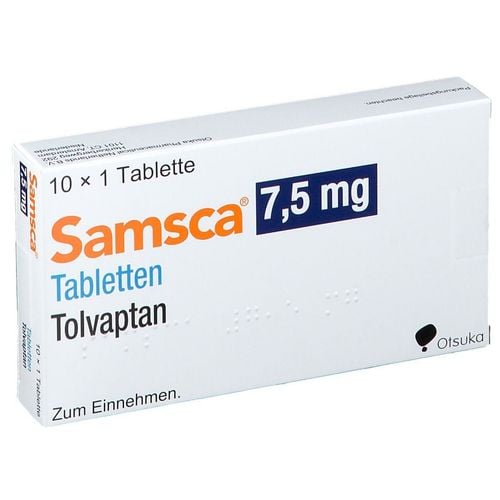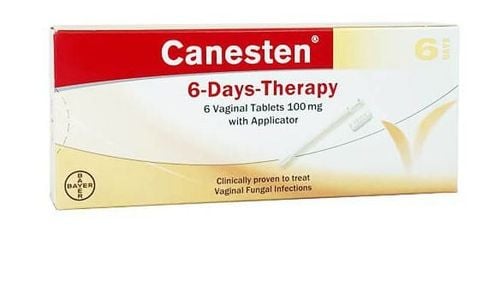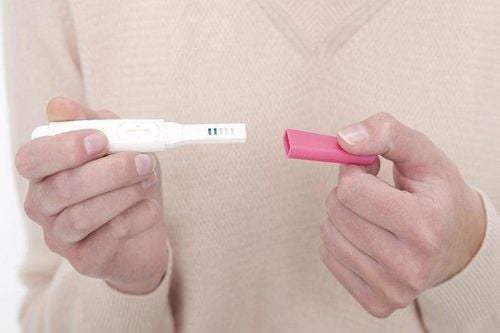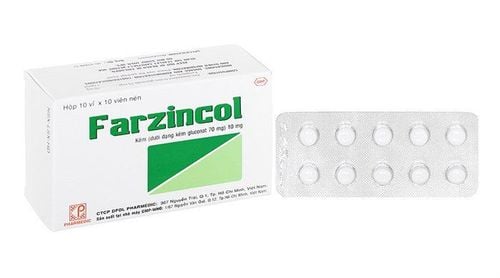This is an automatically translated article.
The article was professionally consulted by Specialist Doctor I Le Thi Phuong - Obstetrician and Gynecologist - Department of Obstetrics and Gynecology, Vinmec Ha Long International HospitalMenorrhagia is a common gynecological problem, caused by many causes and also a sign of many different diseases. Uterine aspiration is one of the ways to treat this condition, helping to stop bleeding from the lining of the uterus, restore a normal menstrual cycle and improve health.
1. Overview of menorrhagia
1.1. Define
Menorrhagia - heavy bleeding are two common problems in gynecological clinical practice, which can be differentiated as follows:Menorrhagia: The phenomenon of having a menstrual cycle, but the menstrual period lasts more than 7 days. . The amount of menstrual blood can be small, moderate or heavy; Menorrhagia: This is bleeding without a period, often confused with irregular periods. The frequency of menorrhagia - heavy bleeding accounts for about 11 - 13% of women, of which 24% of cases are women aged 36 - 40.
Trắc nghiệm: Sự hiểu biết của bạn về kinh nguyệt
Kinh nguyệt có vai trò quan trọng đối với sức khỏe sinh sản, do đó nữ giới cần chủ động trang bị kiến thức để theo dõi và kiểm soát tình trạng sức khỏe. Bài trắc nghiệm sau đây sẽ giúp bạn hiểu hơn về chu kỳ kinh nguyệt của bản thân.1.2. Risk factor
Risk factors for menorrhagia - heavy bleeding may be of organic or functional cause.Group of physical causes include:
Abnormalities related to pregnancy: Miscarriage, stillbirth, ectopic pregnancy, or glioblastoma; Genitourinary tract disease: Uterine fibroids, endometrial polyps, or endometrial hyperplasia; Using certain medications, such as: Estrogen, aspirin, heparin, tamoxifen, or an intrauterine device; Pathological organs: Thrombocytopenia, autoimmune diseases, leukemia, liver, kidney, or thyroid disease; Injury or foreign body of the genital tract. The group of functional causes is often divided by age, specifically:
Puberty: Ovulation disorders; Menopause: Anovulatory cycle; Reproductive age and menopause: Mainly due to physical causes.

1.3. Prognosis
In general, menorrhagia due to organic causes has a prognosis depending on whether the condition is benign or malignant. The cases of functional menorrhagia often have a good prognosis, but if prolonged and not treated early and properly, the patient will have hypochromic anemia, as well as physical weakness.
2. Treatment of menorrhagia
The goal of treating menorrhagia is:
Find and solve the cause (if any); Symptomatic control of bleeding from the uterine lining; Restoration of a normal menstrual cycle in patients of reproductive age; Supportive treatment to improve physical condition. Doctors will give preference to medical treatment with hormone drugs to stop bleeding for girls going through puberty. In addition, the study of blood diseases to rule out malignant causes.
Women of childbearing age need to be tested to find the cause of abnormal uterine bleeding. Most are pregnancy-related physical causes or uterine pathology. In addition, the improper use of hormonal contraceptives, causing hormone disturbances is also one of the reasons to consider.
For premenopausal women, the best treatment is hysterectomy and mucosal curettage to both stop bleeding quickly, and have pathological results (excluding malignancy), as well as confirm the diagnosis. Clearly identify endometrial hyperplasia for subsequent hormone therapy.
3. Uterine suction due to menorrhagia
3.1. Indications and contraindications
Uterine aspiration due to menorrhagia is a procedure to insert a suction tube into the uterine cavity to suck out the tissue under negative pressure. This procedure is indicated in the following cases:Prolonged bleeding confirmed not pregnant; Bleeding at menopause; Bleeding due to uterine fibroids; Menorrhagia of unknown cause. Contraindicated for patients with severe anemia or the patient's physical condition is not qualified to carry out the procedure.
3.2. Prepare
Before hysterectomy, the doctor will advise and clarify for the patient the following information:
Medical condition requiring hysterectomy; The procedure, including the steps taken, as well as possible complications during and after the procedure; Follow-up mode after hysterectomy. In the preparation stage, the patient is also examined for complete health so that the medical team can understand the pulse, body temperature and blood pressure.
The implementation team will wash their hands, wear a shirt, wear a mask and wear gloves according to regulations. Meanwhile, the patient lies ready in the gynecological position and will be given intravenous pre-anesthesia to relieve pain.
3.3. Tools and supplies
Manual 1 valve vacuum pump; Uterine contractions such as Misoprostol, Ergometrin, Oxytocin; Intravenous pain relievers or cervical anesthetics; Sterile cloth towels to be spread on the buttocks, on the abdomen and on the thighs; 2 pairs of sterile gloves; Sterile gowns, caps, and masks; Kit, including: 2 antiseptic forceps, 1 vaginal valve, 1 cervical clamp, uterine measure, suction tube (size 4.5), antiseptic solution, cotton or antiseptic gauze.
3.4. Steps to take
The uterine aspiration process will be carried out according to the following steps:
Disinfect the vulva and thighs; Spread sterile cloth towels; Disinfect the vulva and vagina; Place a vaginal valve, continue to disinfect the vagina with the cervix; Clamping the cervix and measuring the uterine cavity; Aspiration of the uterus with a pump or aspiration; Re-measure the uterine cavity; Wipe and disinfect the vagina and cervix with a new antibacterial forceps; Remove the kit; Send the aspirated specimen to the pathology laboratory; Communicate with patients and relatives about the results of the procedure; Medical staff keep records; Indications for treatment with antibiotics or uterine contractions after the procedure.
4. Monitoring of accidents and handling
Within 3 hours after hysterectomy, the patient will have a complete state of pulse, temperature and blood pressure, as well as the degree of vaginal bleeding. The treatment in case of complications is usually:
Bleeding: Treat to rule out uterine damage, combine uterine contractions (Oxytocin, Ergotamine or Misoprostol) and antibiotics; Uterine perforation: Emergency surgery. If the patient still wishes to get pregnant, the team will clean the uterine cavity and sew up the perforation. For patients who have just had a hysterectomy, if there are no contraindications, the doctor often prescribes hormonal contraceptives daily to restore the menstrual cycle. This is called an artificial menstrual cycle, bleeding is caused by the shedding of the endometrium, not ovulation. The benefit of using this pack of pills right after smoking is to help prevent the risk of uterine adhesions, prevent pregnancy, as well as create a new, more stable menstrual cycle.
To prevent menorrhagia, women should have annual gynecological examinations. Especially when experiencing abnormal bleeding from the genital tract, it is necessary to immediately go to a qualified medical facility for timely diagnosis and treatment with a specialist.
Please dial HOTLINE for more information or register for an appointment HERE. Download MyVinmec app to make appointments faster and to manage your bookings easily.














